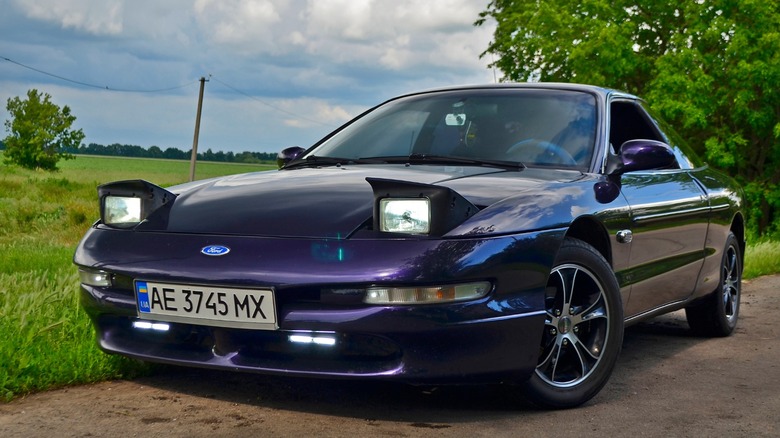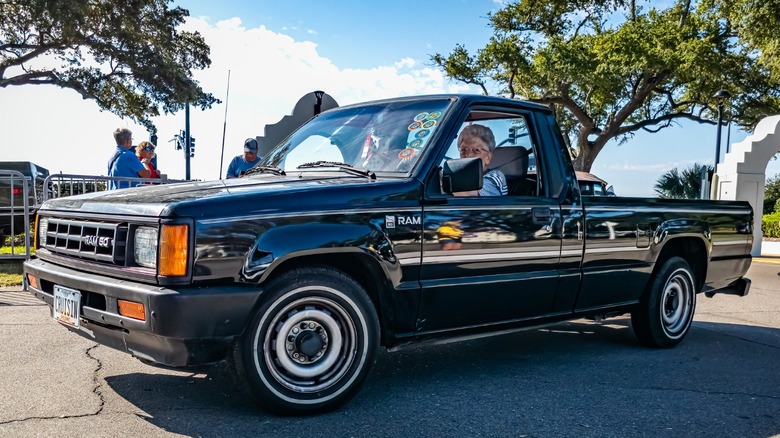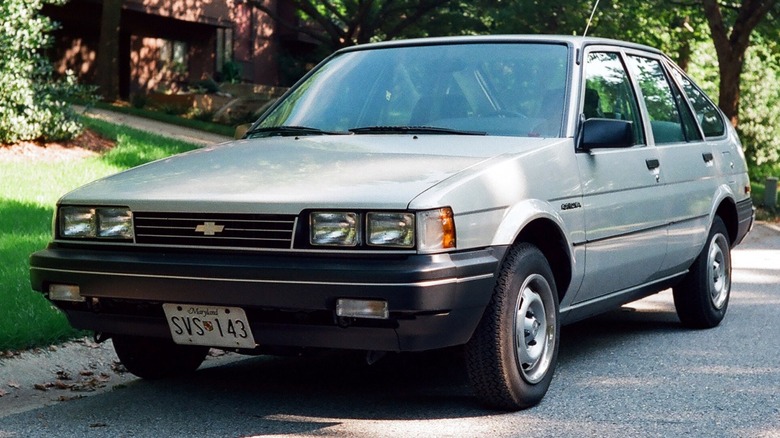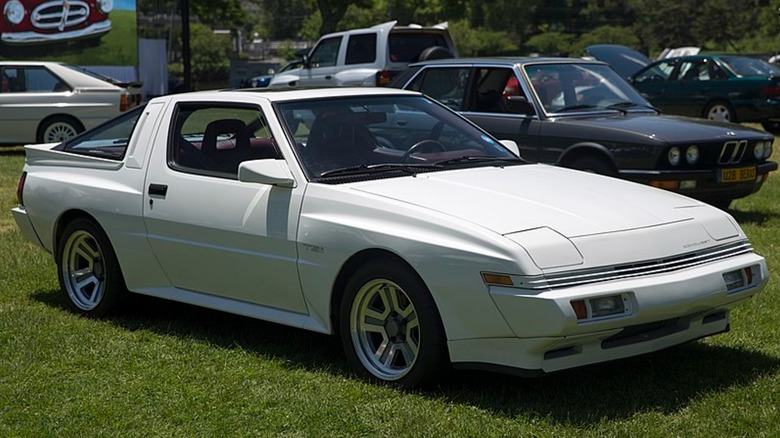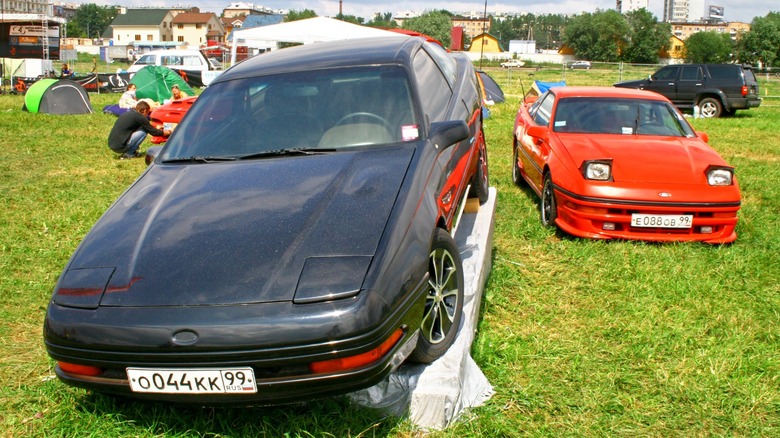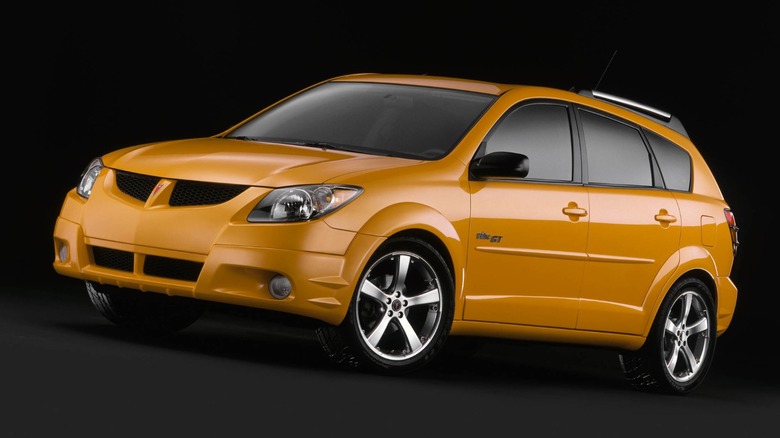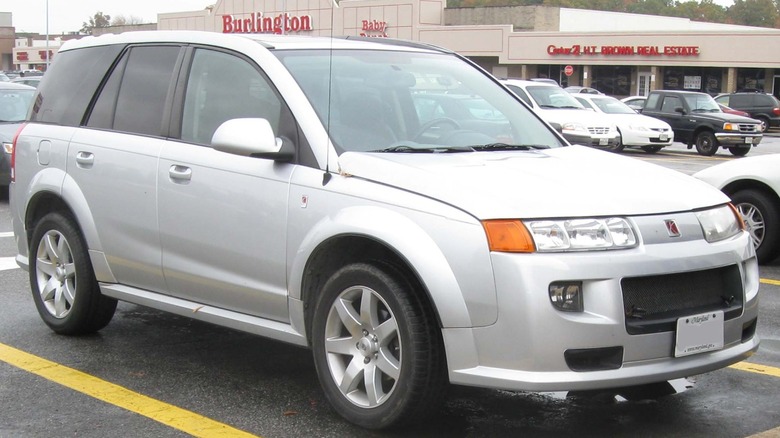6 American Cars With JDM Engines Under The Hood
If you have an American car, you will often assume that you're running American power under the hood. However, there are a few instances where this isn't true, as developing a car engine could cost a car maker hundreds of millions of dollars. So, if it doesn't have a suitable engine for the model it's working on, it might be simpler and much more affordable to borrow an engine from another car maker.
With Japanese car makers in the 80s gaining a reputation for their thrifty but reliable engines, it just made sense for American manufacturers needing new engines to put one in from a Japanese car maker. Another reason that an American car would have a JDM motor is if it was actually a rebadged model from Japan.
There are multiple instances of an American car rocking a Japanese engine under the hood, but we're picking one example of each from different American car makers. We've also arranged this list by model year, as the manufacturer could eventually stop offering that particular JDM engine option in other model years.
1979 Dodge Ram 50
Ram trucks are known today for their large sizes, but the popularity of light trucks in the 70s forced Chrysler (now Stellantis) to build a competitor to the Ford Courier and Chevrolet LUV mini trucks. Since the company was fighting for its life at that time and was busy developing the K-car platform that would save it, it did what any car company with limited resources would do if it needed a competitor: Rebadge an already existing model.
This was how the Dodge Ram 50 mini truck came to be. This small truck is a Mitsubishi L200 Triton wearing a Dodge name tag, and as such, it also used a Mitsubishi engine. The Ram 50 had two engine options: A two-liter four-cylinder that put out 93 hp or a 2.6-liter four-banger with 105 hp for those who need a bit more power. Power is transferred to the wheels via a standard four-speed manual, although you can upgrade this to either a five-speed manual or a five-speed automatic.
Dodge even introduced a larger extended cab version of the Ram 50 in 1988 and, two years after that, gave it a V6 pushing out 142 hp. The Ram 50's production finally ended in 1993 — giving it a 14-year run, which many thought would have ended much earlier with the introduction of the Dodge Dakota.
1985 Chevrolet Nova
One example of a prominent American car getting a JDM engine is the Chevrolet Nova. This model is one of the most iconic Chevys from the 1970s, being sold as a compact car and even having a sporty SS version with a 396 cubic-inch big block V8 engine. The first generation was made through 1979, but it took Chevrolet six years to bring it back for the 1985 model year.
The Nova arrived in 1985, but instead of sporting a big block V8 engine, it now had a thrifty little inline-four from Toyota. In fact, this generation of the Chevy Nova is a rebadged Toyota Sprinter, which is based on the same platform as the venerable Toyota Corolla. The vehicle was even manufactured by New United Motor Manufacturing, Inc. (NUMMI) — a joint venture between General Motors, Chevrolet's parent company, and Toyota.
Although it would also later build the Toyota Corolla and the Toyota Tacoma, the Chevrolet Nova was NUMMI's first product. And although this model has a Japanese heart, it still has American parentage with its Chevrolet badge.
1987 Chrysler Conquest
The Chrysler Conquest is a two-door, wedge-shaped, front-engine/rear-wheel-drive sports car built in the 1980s. Although it's known as the Mitsubishi Starion outside of the U.S. and was built by the Japanese company, Chrysler owned 15% of Mitsubishi then, so it likely had some say in the development of this model.
This car had two engine options — Japan and other markets got a two-liter Sirius G63B turbo inline-four that eventually led to the iconic 4G63 engine, while the U.S. received a larger 2.6-liter turbo inline-four engine and a five-speed manual. The 2.6-liter delivered 145 hp to the rear wheels, and later upgrades to the system allowed it to get as much as 197 hp.
Although this 80s sports car is now often forgotten, it was one of the technological marvels of its time. It had modern amenities like automatic climate control and power windows — standard equipment today but were leading edge tech some 35 years ago.
1989 Ford Probe
Ford initially envisioned the fourth-generation Mustang as a front-wheel drive sports car, which, thankfully, didn't push through. But instead of throwing away the work done for the initial Mustang replacement, which was based on the Mazda 626 platform, the company instead released it alongside the iconic Mustang as the Ford Probe.
Since the Probe was built with the help of Mazda, it also used an F2 engine from the Japanese company. This naturally aspirated 2.2-liter four-banger put out 110 hp and 130 pound-feet of torque, but if you picked the GT variant of the Probe, which comes with a turbocharger, you'll get a power bump to 145 hp and 190 pound-feet of torque.
Ford released a second-generation Probe in 1993, giving at 2.5-liter V6 engine that pushes the front-wheel drive sports car to 164 hp. But despite the company putting in more effort on the newer model, the car still had a Mazda engine under the hood.
2002 Pontiac Vibe
The Pontiac Vibe is a compact hatchback built together by GM and Toyota under its NUMMI partnership — the same factory that built the Chevy Nova in the 1980s. This vehicle had two generations and had an excellent reputation (except the first year of each generation, which are some of the Vibe model years you should avoid).
Because it was built under NUMMI, the Vibe is almost similar to another Toyota product: The Matrix. Externally, the former has a more rugged look, making it look like a crossover, while the latter is more streamlined. Even so, both models had a few similarities under their skin, especially with their engines.
That's because the Vibe is based on the Toyota Corolla platform and is powered by a 1.8-liter four-cylinder engine made by the Japanese company. It also offered an optional AWD system for those looking to have more traction, especially if you live in an area that gets a lot of snow.
2004 Saturn Vue Red Line
The Saturn Vue was one of the brand's most popular models in the 2000s, and GM even introduced a rebadged Opel as its next generation in 2008, making it one of the cars many didn't realize was actually a rebadged model. But before the second-generation Vue became an Opel Antara with a different name, GM did something to the first-generation Vue that made it a strange but powerful performance SUV.
In 2004, Saturn introduced a performance variant of the Vue called the Red Line. This was mostly an appearance package, which gave it a monochrome paint scheme, some aero kit, and a slightly different front and rear look. However, it also had a lowered sporty suspension, tuned steering, and 18-inch alloys.
But what made this model stand out was the 3.5-liter Honda V6 it has under the hood that gave it 250 hp and 242 pound-feet of torque. This was mated to a Honda transmission with an optional AWD package, allowing it to go from zero to 60 in under seven seconds. While this isn't much today, this is a mind-blowing performance 20 years ago, especially as it was found in a crossover.
